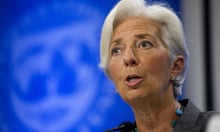After years of sitting on its hands, the Bank of England will swing back into action next month with measures to nurse the economy through the post-Brexit period. Interest rates will be cut from their already historic low of 0.5%. The Bank is considering pumping more electronic money into the economy and could ease credit conditions.
The Treasury is also gearing up to provide stimulus measures. Now that George Osborne’s plan to balance the budget by the end of this parliament has been ditched, there is scope for Philip Hammond to be more creative in his autumn statement later this year. He has already dropped the broadest of hints that he will seize this opportunity.
One benefit of Brexit is that it allows the economy to be rebooted. That is true after any severe economic shock, which certainly applies to the decision to leave the EU. The last time UK policymakers had the chance to implement root and branch cures to the economy’s structural weaknesses was during the financial and economic crisis of 2008-09. Instead they bottled it, relying almost wholly on the Bank of England to support activity through interest rate cuts and the money-creation programme known as quantitative easing (QE).
This was later backed up by Funding for Lending, under which the Bank provided incentives for high street banks to lend more to households and businesses. The impact of all this was to rekindle the housing market and drive up asset prices. There was a boost to the economy, but the benefits were mostly felt by the haves rather than the have-nots. It was business as usual rather than change of the sort seen, for example, after the Great Depression of the 1930s or the oil shocks of the 1970s.
What was needed then, and is even more urgently needed now, is a more comprehensive approach. Britain needs a version of Abenomics, the three-arrow strategy named after Japan’s prime minister, Shinzo Abe, which involves monetary policy, fiscal policy and structural reform.
Let’s take those in turn. Monetary policy is the Bank of England’s job. It embraces setting the official cost of borrowing, buying bonds from banks in exchange for cash to increase the supply of money, and programmes such as Funding for Lending.
The advantage of monetary policy is that it is the quickest way of stimulating activity, which is why the Bank is the first line of defence against a post-Brexit recession. But apart from sending out the message that Threadneedle Street has a steady hand on the tiller, it is not obvious why easier monetary policy should have a marked effect on the economy. Interest rates have been at 0.5% for more than seven years, so cutting them to 0.25% or even 0% is not going to do much. Likewise with another £50bn worth of QE, on top of the £375bn that was pumped into the economy during the Great Recession, and the years that followed.
Fiscal policy is the Treasury’s job. It is a posh way of describing changes to tax and public spending. When the economy was floundering after the collapse of Lehman Brothers in September 2008, Alastair Darling cut VAT and brought forward infrastructure projects to raise demand. For the most part though, the Treasury has preferred to let the Bank of England do the heavy lifting. Monetary policy has been loose; fiscal policy has been tight.
The justification for the conservative approach to fiscal policy has been that the Great Recession left the UK’s public finances in a heck of a mess. There are two measures of a nation’s financial health; the budget deficit, which looks at the difference between tax receipts and spending in any one year, and the national debt, which is an accumulation of all the deficits (and rare surpluses) over time. Britain’s budget deficit hit a peacetime record during the Great Recession, while the national debt more than doubled.
Structural reform involves the nitty-gritty stuff that makes the economy work more effectively: whether children have the right sort of education so that they can find decent employment; the state of the country’s infrastructure; the ease with which an entrepreneur with a good idea can find long-term finance. In the 1980s, there was a tendency to equate structural reform with smashing the trade unions and privatising the nationalised industries. Real structural reform goes deeper and requires something that has typically been in short supply in Britain: patience.
Indeed, the tendency has always been for the quick fix, the misguided belief that there is an instant remedy for problems that have been quietly but destructively festering over many decades.
These longstanding problems – the hollowing out of manufacturing, the concomitant overreliance on the City, a large and growing trade deficit, big regional differentials in productivity – have been given a political manifestation by Brexit. There was a strong link between voting patterns and the health of the local economy.
So what needs to be done? Despite the likely lack of any real traction, the Bank of England needs to ease monetary policy aggressively on 4 August. This will help boost confidence and might prevent the economy sliding into recession in the second half of the year.
Hammond has apparently given some licence by the prime minister to be radical with fiscal policy and should use it. Investment by the private sector has been weak since the Great Recession and is likely to be even weaker in the aftermath of Brexit. The government, therefore, needs to fill the gap.
There are two ways of doing this. The first involves the Treasury taking advantage of low interest rates to borrow for long-term investment. Not just in roads, railways and airports but in Britain’s digital infrastructure and its human capital. One of the country’s most glaring structural weaknesses is that the unemployment rate for young people who leave school with the most basic education is among the highest in the developed world.
An alternative approach would be to harmonise the activities of the Treasury and Bank of England, with the former issuing infrastructure bonds and the latter buying them up through its QE programme. This idea was floated by the Green New Deal group (of which I am a member) after the Great Recession, proposing a major programme of housebuilding and energy efficiency involving jobs for every UK constituency.
Jeremy Corbyn latched on to this idea, calling it People’s QE, when he was running for the Labour leadership, but he now appears less keen. This is a bit curious. A Green New Deal or People’s QE is something governments need to have up their sleeve when times get tough and they have run out of alternatives. Like now.










